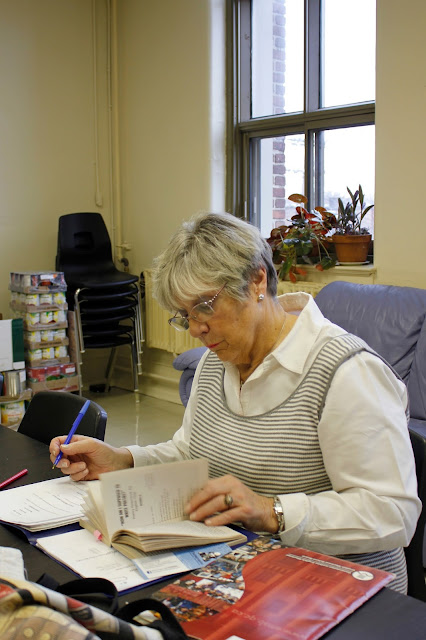Matthew Thomson-Blog Reflection Article for "Reconcile" Exhibition
Matthew Thomson-Blog Reflection Article
Blanket was created as an offspring of an older piece of artwork entitled Road Mapping, which was produced from 2012-2015. Road Mapping features a section of colored sequins that reproduce the flattened body of a pigeon on the pavement. This artwork was the first of a series of images that used roadkill as a starting point to examine how death is perceived, the vulnerability of animals to human activity, and ways in which I could pay homage to these animals. As I look at the images from that series, I ponder whether there is another space or life beyond that death, and also how that moment marks with finality and beauty the death stage in life, be it in the life of a living being, an idea or concept, or a part of ourselves that we have shed.
| Road Mapping, 2012-2015, archival pigment print on Stonehenge with Japanese paper, archival glue, sequins, Art Graf and found frame |
| Close-up view of Blanket, 2017; wax crayons (Caran d'Ache Neocolor 1 and Prismacolor Art Sticks), ink, Usu Kuchi extra-heavyweight, found wooden dowels, yarn. |
In the Community Art Studio class I was able to examine issues such as reconciliation, oppression, post-colonialism and cultural appropriation. These are issues that I am less familiar with but that I was interested in learning about, which brought me out of my comfort zone. Being initiated to these concepts has been a complex process that has given me some insight into how to better appreciate positive things like sharing, witnessing, art-making, and learning; it has also given me insight into how to navigate and potentially transform negative things like cultural appropriation and power struggles into an opportunity for personal and communal growth. I also was able to witness and discuss some of these issues during my service learning. These issues have impacted and informed my concept and practice of community-building, for they have been added as ingredients in a recipe for appreciating and experiencing the Art Hive third space, and by extension, have slowly spread into how I relate to the larger world that I live in.
Reconcile also alludes to reconciliation. I was lucky to experience the Blanket Exercise, which is a rich activity that is discombobulating for its participants. The blanket is used as an element within the exercise to represent the land in this interactive experiencing of First Nations history. Although ultimately ungraspable, getting a sense of the gravity of the impact that settlers have had on First Nations peoples is an eye-opening experience, and calls on us to re-envision our place and role within in country and also the rest of the world. We feel many different feelings like shame, confusion and anger, during and after the experience; it is necessary to accept these feelings and use them towards a transformative end. One of the underpinning ideas that we explored in the class was allowing yourself to look at things in a new way, and to do that one must create connections and imagine new possibilities. I see Blanket as connecting to this experience and I hope that it honors some of the learnings that were imparted on me by having participated.
When I look at Blanket, I am reminded of a colourful knitted blanket that my mom made for my wife and I many years ago that both of us had fond memories of. It was very comfortable and comforting. The blanket was destroyed by our dog. As an afterthought, I feel that Blanket somehow honors that blanket by its recreation in a new form, just like how, over time, we can look at old ideas that we are attached to and reinvent them so that they are more representative of who we are and how we relate to the world.




Comments
Post a Comment